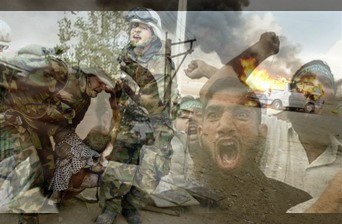Has Interrogation Produced Results?
Marc Thiessen tries to answer that question at The Corner, and totally dismantles the opposition in the process: "And the whole chain I have just described began with the interrogation of Abu Zubaydah."
Since his capture, Abu Zubaydah had provided the CIA with the critical link that had identified KSM as “Muktar” and the mastermind of 9/11, as well as information that led to the capture of Padilla and the disruption of a planned attack on the American homeland. The CIA knew he had more information that could save American lives, but now he had stopped talking. So the CIA used enhanced interrogation techniques to get him talking again — and these techniques worked.
Zubaydah soon he began to provide information on key al Qaeda operatives, including information that helped us find and capture more of those responsible for the attacks on September the 11th, including Ramzi bin al Shibh. At the time of his capture, bin al Shibh had been working in Karachi on follow-on operations against the West — including a plot to hijack passenger planes in Europe and fly them into Heathrow airport. Bin al Shibh had identified four operatives for the operation, when he was taken into custody.
Together Zubaydah and bin al Shibh provided information that helped in the planning and execution of the operation that captured KSM. KSM then provided information that led to the capture of a Southeast Asian terrorist named Zubair — an operative with the terrorist network Jemmah Islamiyah, or JI. Zubair then provided information that led to the capture of a JI terrorist leader named Hambali — KSM's partner in developing a plot to hijack passenger planes and fly them into the tallest building on the West Coast: the Library Tower in Los Angeles. Told of Hambali's capture, KSM identified Hambali's brother "Gun Gun" as his successor and provided information that led to his capture. Hambali's brother then gave us information that led us to a cell of JI operatives that were going to carry out the West Coast plot.
KSM also provided vital information that led to the disruption of an al Qaeda cell that was developing anthrax for attacks inside the United States. He gave us information that helped us capture Ammar al Baluchi. At the time of his capture, al Baluchi was working with bin al Shibh on the Heathrow plot, as well as a plot to carry out an attack against the US consulate in Karachi. According to his CIA biography, al Baluchi “was within days of completing preparations for the Karachi plot when he was captured.”
In addition, KSM and other senior terrorists helped identify individuals that al Qaeda deemed suitable for Western operations, many of whom we had never heard about before. These included terrorists who were sent to case targets inside the United States, including financial buildings in major cities on the East Coast. They painted a picture of al Qaeda's structure and financing, and communications and logistics. They identified al Qaeda's travel routes and safe havens, and explained how al Qaeda's senior leadership communicates with its operatives in places like Iraq. They provided information that allowed the CIA to make sense of documents and computer records that we have seized in terrorist raids. They identified voices in recordings of intercepted calls, and helped us understand the meaning of potentially critical terrorist communications. It is the official assessment of our intelligence community that “Were it not for this program, our intelligence community believes that al Qaeda and its allies would have succeeded in launching another attack against the American homeland.”
And the whole chain I have just described began with the interrogation of Abu Zubaydah.
When the Press mounts a baseless attack, just respond with the facts.








No comments:
Post a Comment